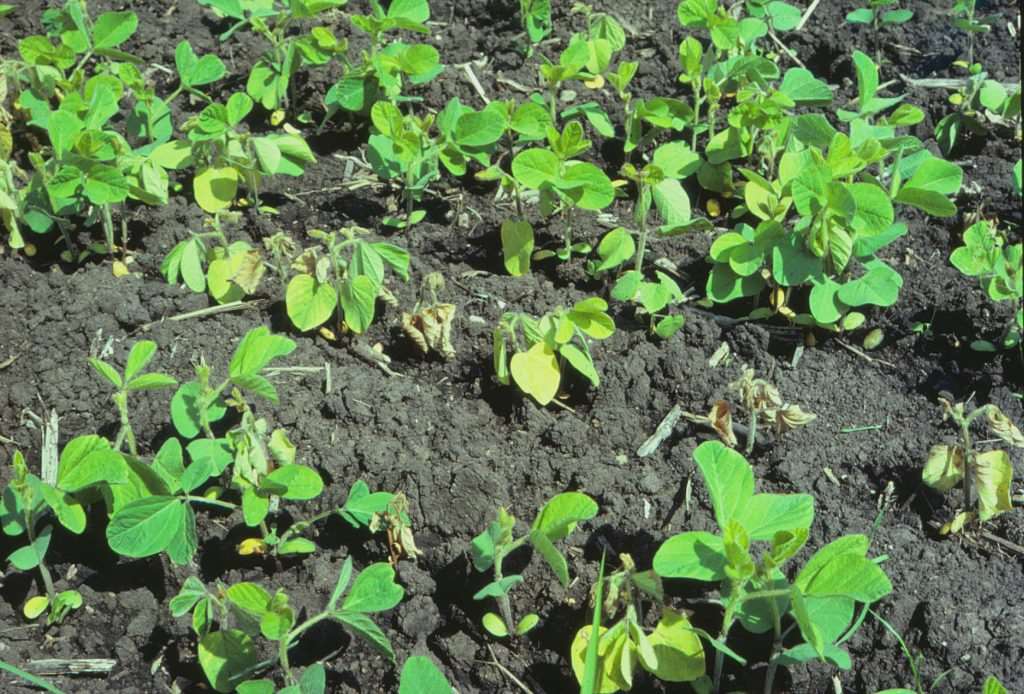Producers have to accurately identify the disease to determine best treatment
Given the excess rainfall and low soil temperatures in parts of the province, such as Essex County and Niagara region, OMAFRA is reminding producers to watch for soybean root rots.
Specifically, OMAFRA discussed four soybean seedling diseases – Phytophthora root rot, Rhizoctonia root rot, Fusarium root rot and Pythium seedling blight – in Thursday’s field crop report.

OMAFRA Field Crop Report
Phytophthora root rot, a fungus common in clay and clay-loam soil, can affect soybeans at any growth stage. Plants exhibiting this disease often have a chocolate brown/purplish stem lesion, which extends anywhere on the rotted stem up to the third node. This fungus is most common in wet environments and soils above 15 C.
Rhizoctonia root rot presents in the form of a reddish-brown lesion around the base of the stem and the top of the roots. This stem lesion may expand and break the stem.
Plants infected with Fusarium root rot may be stunted with brown or black discoloured roots. The roots may not be well-developed, either. This disease is frequently related to plant stress.
Pythium seedling blight can occur after just a few hours of very damp conditions. Symptoms of this disease include rotten, soft seeds and root systems that are not well-developed.
Soil can be the host of these disease-causing organisms for a long time, so short crop rotations between soybeans may not deter these organisms from increasing to high levels in the soil. OMAFRA recommends producers wait 10 to 14 days between the harvesting of cover crops and the planting of soybeans. This practice should reduce disease risk and pathogen populations.
Farmers may need to take additional measures in no-till or reduced tillage practices, as these soils tend to have more moisture and to warm up more slowly. Fungicide seed treatments and better drainage systems may help reduce the risk of disease. As each disease reacts differently to fungicide treatments, farmers and field scouts need to accurately identify the disease in order to properly treat it.